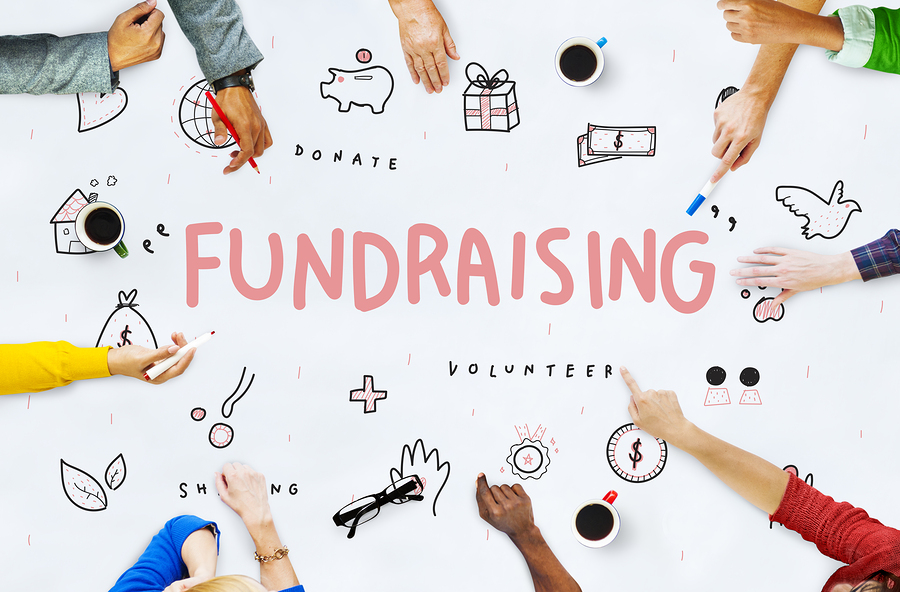Online Fundraising: Effective Digital Campaigns for Nonprofit Success
Online Fundraising: Effective Digital Campaigns for Nonprofit Success
Blog Article
The Function of Community Interaction in Nonprofit Fundraising: Structure Lasting Relationships for Sustainable Support
Community engagement is progressively identified as a critical element of effective not-for-profit fundraising. The techniques and techniques employed to involve communities differ widely, increasing crucial questions about effectiveness and effect.
Comprehending Area Interaction
Area engagement is an important part of successful nonprofit fundraising initiatives. Nonprofits should identify vital stakeholders-- such as area members, regional businesses, and other organizations-- to develop effective engagement strategies.
Reliable community involvement is based on energetic listening and responsiveness to the needs and interests of the neighborhood. This process involves soliciting comments, recognizing area characteristics, and ensuring that the organization's mission lines up with local top priorities. Engaging the area can take different kinds, including public meetings, volunteer opportunities, and partnership campaigns, each made to motivate participation and investment in the company's goals.
Moreover, area engagement should be approached as a continuous dialogue rather than a single effort. By cultivating an inclusive environment where area voices are listened to and valued, nonprofits can develop a strong structure for future fundraising endeavors. Ultimately, a deep understanding of community interaction equips organizations to produce genuine links that improve their total effectiveness and sustainability.
Advantages of Strong Relationships
Solid partnerships created through area engagement return numerous advantages for nonprofit fundraising efforts. Most importantly, these connections foster depend on and credibility, essential components in motivating contributors to contribute. When possible advocates see a not-for-profit proactively included in their community, they are more probable to think in its mission and impact.

In addition, these partnerships help with reliable communication. Nonprofits can take advantage of their links to share stories of impact, updates, and needs, making sure that fans remain informed and engaged. This open line of communication not only enhances bonds however also urges referral promo, expanding the nonprofit's reach.
Finally, solid neighborhood ties can draw in brand-new companions and sponsors. Individuals and services are more likely to line up with companies that show meaningful area involvement, giving added sources and support that can dramatically enhance fundraising capabilities. Therefore, growing durable relationships through area involvement is important to a not-for-profit's lasting fundraising success.
Strategies for Effective Engagement
How can nonprofits properly involve their neighborhoods to boost fundraising initiatives? Establishing targeted techniques is important for fostering meaningful connections. Initially, leveraging social media sites systems enables companies to share their objective dynamically and interactively, reaching a more comprehensive target market. Normal updates, involving web content, and calls-to-action can galvanize neighborhood rate of interest and participation.
Second, organizing area events, such as workshops, volunteer chances, or fundraising drives, assists in face-to-face interaction, permitting nonprofits to display their impact and efforts. These events not just elevate funds however additionally grow connections and allow neighborhood members to engage directly with the reason.
Third, implementing customized interaction techniques can boost involvement. Tailoring messages to certain benefactor segments based on rate of interests and previous payments cultivates a feeling of belonging and investment in the company's goal.
Finally, creating collaborations with regional organizations and community leaders can enhance outreach initiatives. Joint campaigns can boost presence and trustworthiness, showing a cumulative dedication to the neighborhood's health. By integrating these strategies, nonprofits can construct long-term partnerships that boost fundraising efforts and drive sustainable assistance.
Gauging Interaction Success
While engaging the community is important for successful nonprofit fundraising, measuring the efficiency of these involvement efforts is just as essential. Establishing clear metrics enables organizations to examine how well they are getting in touch with their audience and attaining their fundraising objectives. Trick performance signs (KPIs) such as contributor retention rates, volunteer engagement degrees, and involvement on social networks systems supply tangible information for evaluation.

Frequently assessing these metrics enables organizations to pivot their methods when required, ensuring that community engagement continues to be straightened with their overall mission. Moreover, sharing these outcomes with stakeholders cultivates transparency and develops trust fund, encouraging further neighborhood involvement. Inevitably, a robust dimension structure not just educates future fundraising efforts but also strengthens the connection between the nonprofit and its advocates, laying the foundation for lasting success.
Study in Neighborhood Influence
Many situation research studies show the profound influence that area interaction can have on nonprofit fundraising success. One remarkable instance is the "Food for Thought" initiative, where a regional food financial institution partnered with colleges and organizations to host area dinners. These events not only elevated funds but additionally promoted a sense of belonging among participants, substantially boosting benefactor retention prices.
Another compelling situation is the "Eco-friendly Spaces Project," which involved neighborhood citizens in the revitalization of metropolitan parks. This initiative not just gathered economic assistance from neighborhood businesses yet also grew a volunteer base that contributed to recurring maintenance and programming. The feeling of ownership and pride amongst community members translated into sustained contributions.
In the world of arts, the "Art for All" campaign efficiently involved local musicians and clients to develop joint art setups, resulting in boosted presence and contributions for a regional arts nonprofit.
These examples highlight that when nonprofits focus on area participation, they can produce long-term partnerships that improve fundraising initiatives, ensuring lasting assistance and promoting a lively neighborhood culture. Such cases demonstrate that area involvement is not merely a strategy yet an important pillar of nonprofit success.
Verdict
In final thought, area engagement is important to the success of nonprofit fundraising efforts. Inevitably, a robust foundation of neighborhood support not only magnifies fundraising possible however additionally grows a culture of partnership, crucial for achieving lasting organizational goals and maintaining purposeful influence. fundraising consultant.
Nonprofits must determine key stakeholders-- such as area members, regional organizations, and various other organizations-- to produce effective engagement techniques.

In verdict, neighborhood engagement is integral to the success of not-for-profit fundraising efforts.
Report this page